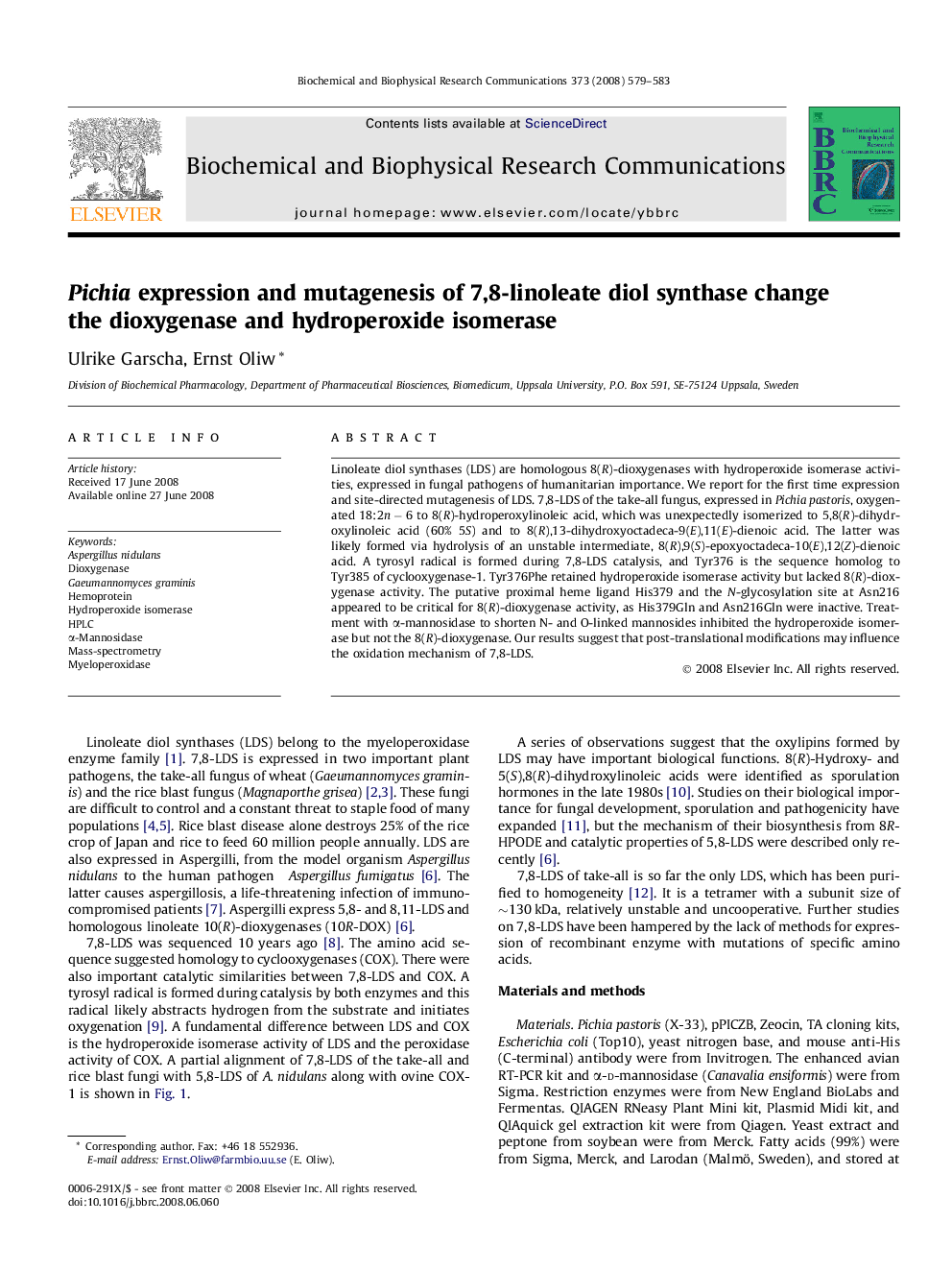| Article ID | Journal | Published Year | Pages | File Type |
|---|---|---|---|---|
| 10766684 | Biochemical and Biophysical Research Communications | 2008 | 5 Pages |
Abstract
Linoleate diol synthases (LDS) are homologous 8(R)-dioxygenases with hydroperoxide isomerase activities, expressed in fungal pathogens of humanitarian importance. We report for the first time expression and site-directed mutagenesis of LDS. 7,8-LDS of the take-all fungus, expressed in Pichia pastoris, oxygenated 18:2n â 6 to 8(R)-hydroperoxylinoleic acid, which was unexpectedly isomerized to 5,8(R)-dihydroxylinoleic acid (60% 5S) and to 8(R),13-dihydroxyoctadeca-9(E),11(E)-dienoic acid. The latter was likely formed via hydrolysis of an unstable intermediate, 8(R),9(S)-epoxyoctadeca-10(E),12(Z)-dienoic acid. A tyrosyl radical is formed during 7,8-LDS catalysis, and Tyr376 is the sequence homolog to Tyr385 of cyclooxygenase-1. Tyr376Phe retained hydroperoxide isomerase activity but lacked 8(R)-dioxygenase activity. The putative proximal heme ligand His379 and the N-glycosylation site at Asn216 appeared to be critical for 8(R)-dioxygenase activity, as His379Gln and Asn216Gln were inactive. Treatment with α-mannosidase to shorten N- and O-linked mannosides inhibited the hydroperoxide isomerase but not the 8(R)-dioxygenase. Our results suggest that post-translational modifications may influence the oxidation mechanism of 7,8-LDS.
Keywords
Related Topics
Life Sciences
Biochemistry, Genetics and Molecular Biology
Biochemistry
Authors
Ulrike Garscha, Ernst Oliw,
